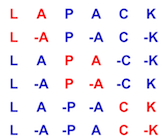137 SUBROUTINE dlatrz( M, N, L, A, LDA, TAU, WORK )
147 DOUBLE PRECISION A( LDA, * ), TAU( * ), WORK( * )
153 DOUBLE PRECISION ZERO
154 parameter( zero = 0.0d+0 )
170 ELSE IF( m.EQ.n )
THEN
182 CALL dlarfg( l+1, a( i, i ), a( i, n-l+1 ), lda, tau( i ) )
186 CALL dlarz(
'Right', i-1, n-i+1, l, a( i, n-l+1 ), lda,
187 $ tau( i ), a( 1, i ), lda, work )
subroutine dlarfg(n, alpha, x, incx, tau)
DLARFG generates an elementary reflector (Householder matrix).
subroutine dlarz(side, m, n, l, v, incv, tau, c, ldc, work)
DLARZ applies an elementary reflector (as returned by stzrzf) to a general matrix.
subroutine dlatrz(m, n, l, a, lda, tau, work)
DLATRZ factors an upper trapezoidal matrix by means of orthogonal transformations.

